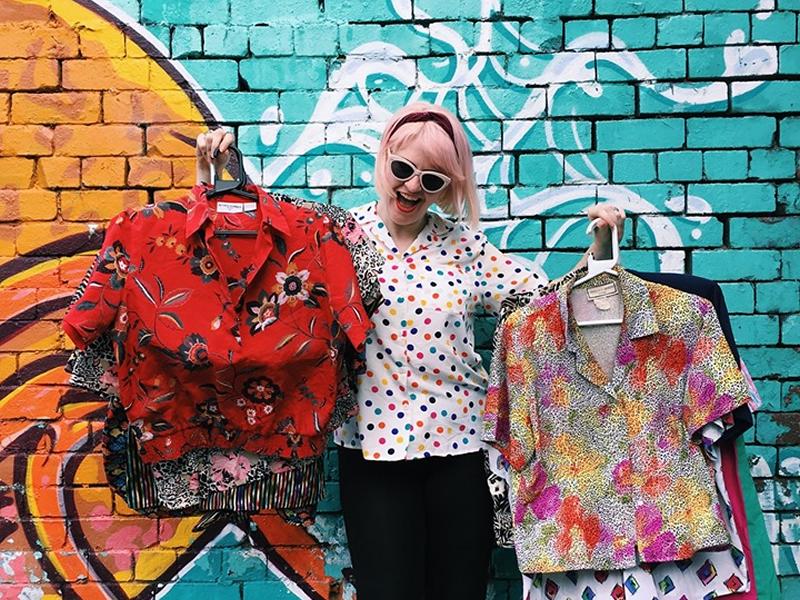
What is vintage clothing like?
There is a general question about what is really considered vintage clothing. As we mentioned before, this must have a certain age, and it is not only the clothes but also the accessories. The general agreement is that it is clothing from the 1920s to 20 years ago (around 1998).
In recent years there has been a furore of vintage clothing, more and more people are interested in this type of clothing. It is important to point out that this trend is not the same as new clothes inspired by these decades.
Recently, many people have also started to consider vintage clothes as being 10 years old if they are designer pieces. The latter is due to the fact that several famous and influential designers have passed away. Therefore, the clothes they created, even if they are more recent, are considered to be vintage.
The concept of vintage clothing is often confused with antique clothing. But, this is the one that is more than 100 years old. On the other hand, retro clothes are new, but with a style that evokes the past.
The classic style is considered the opposite of vintage, because it means that the pieces remain fashionable, that they are stylish no matter the passage of time. That is, they do not reflect an era, but transcend time. For example, the black dress, trench coats, pumps, white shirts or blazers.
In general, the definition of vintage clothing is very broad. As each decade passes, new pieces are included within the vintage style and clothes that were once vintage are now classified as old.
For example, a black dress from the 80s is classic, not vintage, even if it is from decades ago. But, a blazer with broad shoulders from that era is.
History of Vintage Fashion
From the beginning of the First World War the idea of vintage clothing or reusing clothes began to come to life. In times of war, economic difficulties are common, so the pieces are amended, fixed and repaired. They are also passed on from one generation to another in a family.
Then, at the end of the 20th century there was an increase in demand for branded clothing. But in the late 1980s, the United States returned to vintage clothing, because they were looking to reduce the use of branded clothing.

From there, little by little, vintage clothing went from being a subculture to being part of the mainstream or mass culture. The reasons for its use include the idea of sustainable fashion and care for the environment.
Characteristics of vintage clothing
We’re talking about vintage clothing, not a style of dressing. Your style may be to wear vintage, but vintage clothing is from a different era than today. Modern brands incorporate the term vintage into their clothing, this can be confusing for many first-time buyers.
What you must remember is that a real vintage item will not say vintage on the label.
Vintage clothing can be haute couture, as we said, but it can also be popular brands. It can also be used or new that has been stored, handmade or manufactured.
Vintage clothing is also about fashion and responsible consumption. It’s a way to slow down a fast-paced world, because reusing clothes means less production of new clothes.
Clothing of this style can be commercially produced or handmade.
- You find natural fibers in vintage clothing, such as cotton, linen, wool, cashmere, mohair and angora.
- There are also synthetic fibers such as polyester, nylon, lycra, acetate, among others.
- Today it is considered clothing from the late 1990s to around the 1940s and 20s.
- The most used patterns are plaid, polka dot, floral and geometric.
Vintage fashion for decades
As we said, it is estimated that the clothes of this style are inspired by those of the decades from 1920 to 1990. Therefore, we will mention some of the most outstanding styles of each decade:
1920: striking dresses, Mary Jane heels, t-strap shoes, feathers, sequins, sagging waist dresses
1930: bolero jackets, puffed and swinging sleeves. Oxfords, open heels, peep-toe shoes. Bias-cut pieces. Fabrics such as velvet and satin. Accessories such as fedora hats and thin belts.
1940: tweed and wool check skirts, reptile leather bags and shoes, platform shoes, brooches, hats, tea dresses, ditsy floral prints In general, much use of tailoring and much austerity.
1950: circular skirts and petticoats, shirt dresses, leather piping, sweater sets, pearl necklaces, Wayfarer sunglasses, Capri jeans, mule shoes

